Mention Japanese cuisine to anybody and they are likely to think seafood, Sushi, Sashimi , Ramen and Tempura among others. But there is a whole lot more to Japanese food than its stereotypical interpretations. This was something that I experienced first hand while touring the country recently on a Sake expedition of which food was an integral part.
Right from the Tokyo airport where I could grab an O-nigiri (rice based Japanese snack) , to a completely vegan meal towards the end of my trip, there was a humongous range of Japanese food available. The best part is- all of it was very healthy too!
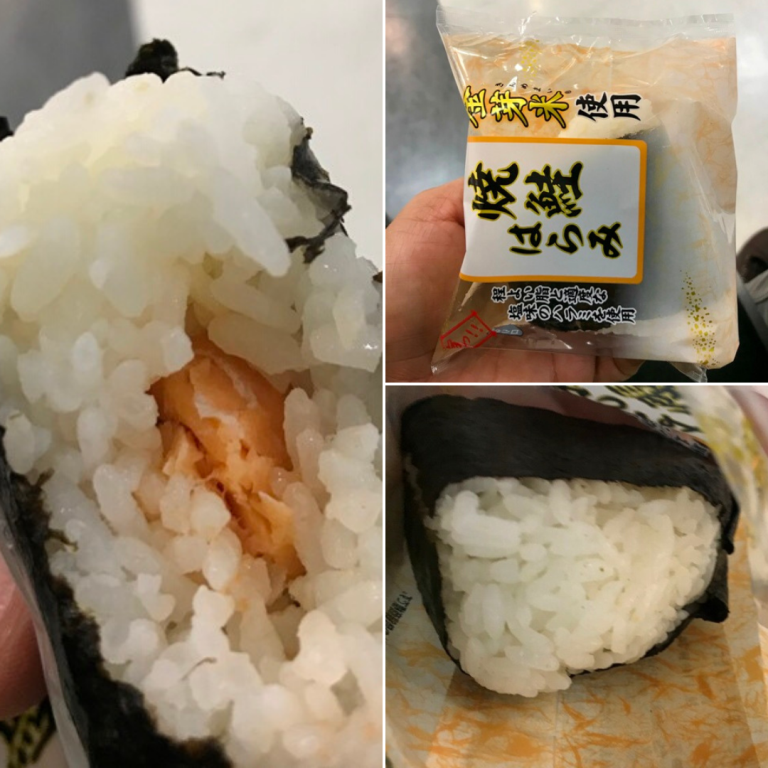
Continuing the Romance with Japanese Food
Back at home, my tryst with Japanese food continued with a series of engagements with all things Japanese. As a matter of fact I carried some exotic ingredients back from Japan like Sake Kasu (the solids left after pressing out Sake) , Yuzu Seasoning and Dried Sea Weed that have been coming handy ever since. But the grand daddy of all such engagements has undoubtedly been the Japanese food festival hosted recently by the Embassy of Japan in India.

Titled “An Evening with Japanese Food 2020″ , the festival saw celebrated Chef Ogawa Hirotoshi, Japanese Food Goodwill Ambassador, arrive in India to share and demonstrate some cutting edge (pun intended) culinary skills with food professionals and connoisseurs of the country.
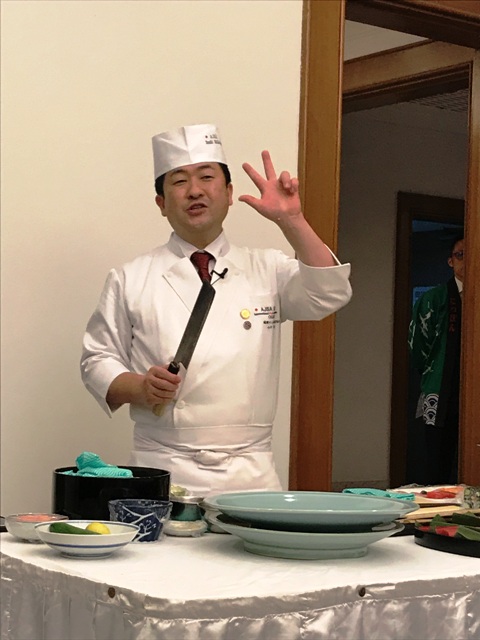
The concept of the festival revolved around Washoku– a collective name for traditional Japanese food. Washoku gained particular prominence in 2013, when it was designated as an Intangible Cultural Heritage of UNESCO. Today, the term stands as a synonym for fresh, healthy and delicious food everywhere.
Chef Ogawa Hirotoshi- a snapshot
- Director General, World Sushi Skills Institute (WSSI).
- Lecturer, All Japan Sushi Association (AJSA).
- Chief In-Charge, World Sushi Cup.
- Appointed as Japanese Goodwill Cuisine Ambassador in 2017.
The event also saw Chef Pankaj Bhadouria, the winner of Master Chef India Season 1 (2010) share some interesting insights into Japanese food that she gained during her recent culinary trip to Japan.

When Knifing is an art
Not new to India, Chef Hirotoshi has travelled several times to the country, conducting workshops and master classes for the trade. This time, at a more diverse gathering, the chef demonstrated his jaw dropping knife skills while belting out slivered rolls of cucumber, a profile of Mt. Fuji from a bamboo leaf and Sashimi cuts on a song. The Chef emphasized the importance of the right knife for the right function, as also the fact that Japanese knives are sharp on one side while thick and blunt on the other, thus enabling their cutting pressure to be focused on one side. Such a targeted edge is absolutely necessary for preparing the finest of Sushi.
Getting to learn from Chef Ogawa Hirotoshi
- Nigiri means “grasping” in Japanese and a Nigiri Sushi is made by grasping the materials with hands. It is important that while preparing, the Sushi should leave your hands at the earliest so as not to warm it unduly.
- While handling Sashimi during preparation, only the fingers and not the palm should come into its contact to prevent warming.
- The best way to eat Sushi is by using your hands and not chopsticks or cutlery. As sushi is made using hands, the true essence of it is conveyed only when you eat it with hands.
The bountiful Sushi platter prepared by the chef in the meantime, resembled nothing short of an artwork. I overheard some of my chef friends exclaim that it would usually take about an hour for what Chef Hirotoshi accomplished in just 15 minutes!
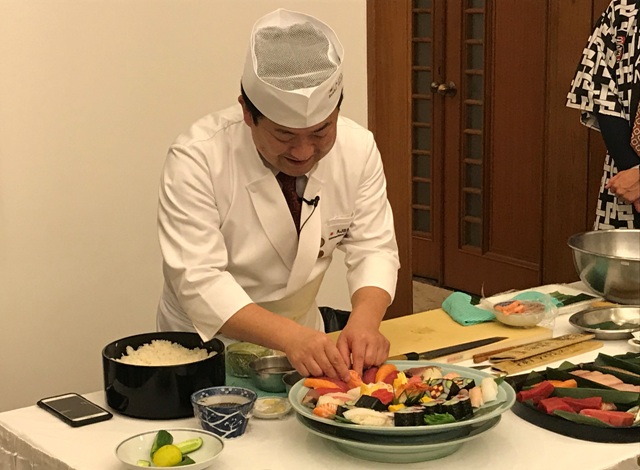

More to Japan than just seafood
Sharing her recent learning of Japanese cuisine, Chef Bhadouria highlighted that contrary to the general perception, Japanese food is much more than just raw fish. Different meats, vegetables, cooked versions of sea food and even vegan possibilities make Japanese cuisine very versatile. During her trip to Japan, Bhadouria also learnt that there is not only one but many varieties of Soy sauces and Miso pastes that can put a lot of dexterity in a cuisine maker’s hands.

The layers of Umami
Japan has also given the world the concept of Umami that relates to the savouriness of food. Bhadouria enlightened the audience about the permutations and combinations of Umami with the combination of three of its contributing elements viz. Glutamic acid (an alpha amino acid commonly found in sea weed, meat, poultry and dairy products), Inosinic acid (found in fish and meats along with Glutamic acid) and Guanylic acid (found in mushrooms, instant noodles and savoury snacks). Depending on the constituents of the recipe, the Umami expression of a preparation can be varied. The chef also highlighted that the process of fermentation embosses the Umami profile of a food very well.

A Showcasing of Japanese Food and Beverages
The lectures at the event led to a walk around tasting of a substantial range of Japanese food at the spacious embassy premises. Stalls were put up by Japanese food and beverage companies already in India and those aspiring to be in the country. Prominent food representatives were: Daawat Kameda (Kameda rice crisps), Kikkoman (Sushi), CoCo Ichibanya (Japanese Curry), Pepper Lunch (Japanese style live barbecue).
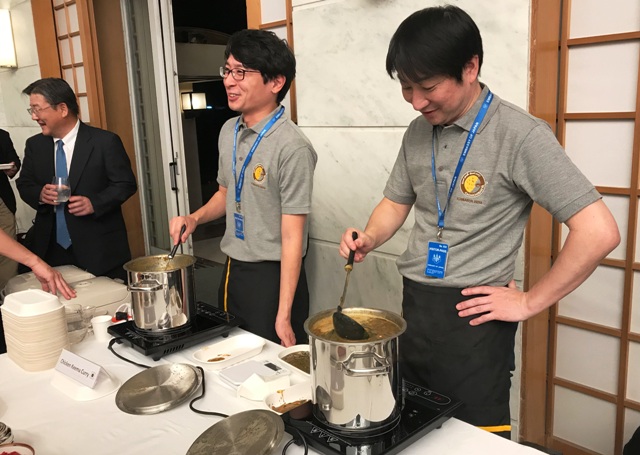
There were also the newly appointed “Japanese Food and Ingredient Supporter Stores Overseas”- a certification by the Japanese Government for promoting safe and delicious Japanese food products and alcoholic beverages. These were- Premium Ichizen, Makoto Udon, Sushi & More and Tokyo Table .

The beverages side at the event was represented by the Sakes Ozeki, Enter and Born as well as Roku Gin from liquor giant Beam Suntory .
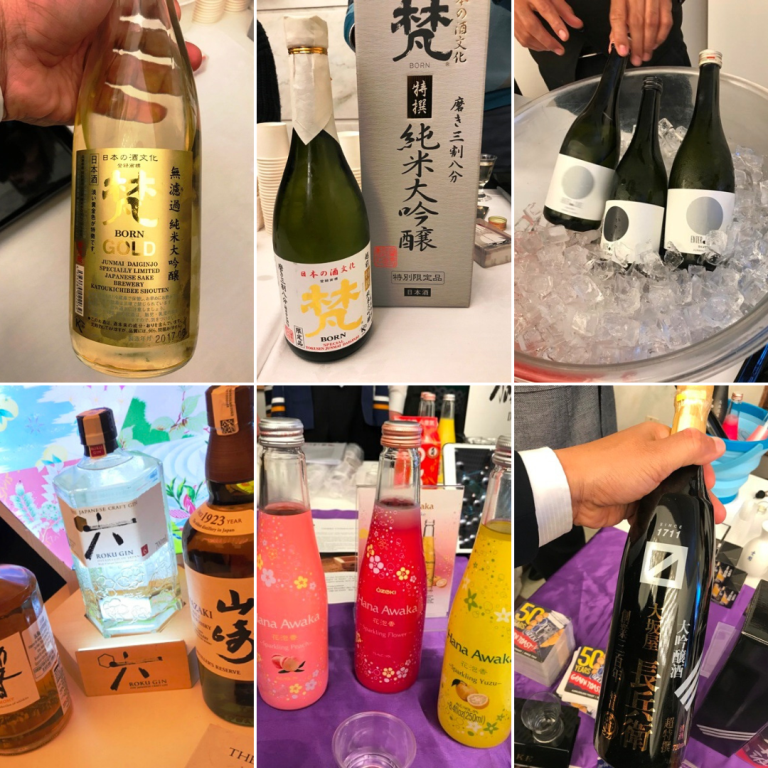
I was particularly enthused to find apples from Aomori , having recently visited the Aomori prefecture in Northern Japan that produces some of world’s best Fuji apples. While returning from Aomori, I had carried some apples back home to India and wondered if those could be available readily in India. It seems that my wish has been answered sooner than later, as according to the Japanese embassy, the trial shipment of these apples to India has already begun.

Considering the warm response that the event received, An Evening with Japanese Food 2020 served well its aim of bringing Japanese cuisine closer to India. With the two Asian countries having a lot in common in terms of cultural heritage, cuisine can certainly be a binding factor. According to the Embassy of Japan in India such efforts for the promotion of Japanese food among Indian people will continue in the future too.






